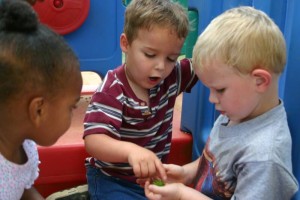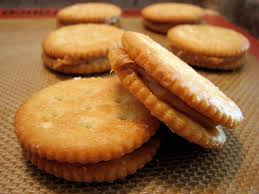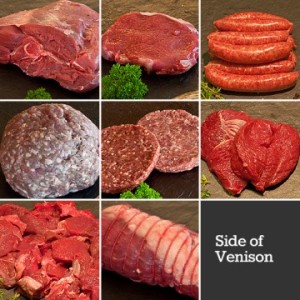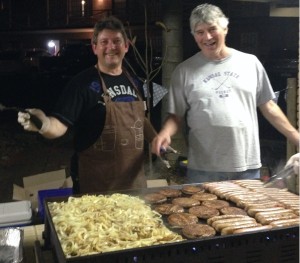Two new studies assess the risk of various manures in broccoli and spinach respectively.
 In 2011 and 2012, trials consisting of experimental plots were carried out to evaluate the presence of pathogenic (Listeria monocytogenes, Salmonella) and prevalence of indicator (Escherichia coli) microorganisms in broccoli fertilized with liquid hog manure or mineral fertilizers and irrigated zero, one, or two times with E. coli–contaminated water.
In 2011 and 2012, trials consisting of experimental plots were carried out to evaluate the presence of pathogenic (Listeria monocytogenes, Salmonella) and prevalence of indicator (Escherichia coli) microorganisms in broccoli fertilized with liquid hog manure or mineral fertilizers and irrigated zero, one, or two times with E. coli–contaminated water.
In 2011, results showed that E. coli contamination in broccoli heads was affected by the interval between irrigation and sampling (P = 0.0236), with a significant decrease between the first and third day following irrigation (P = 0.0064). In 2012, irrigation frequency significantly increased E. coli prevalence in broccoli samples (P = 0.0499). In 2012, E. coli counts in the soil were significantly influenced by the type of fertilizer applied, as plots receiving liquid hog manure showed higher bacterial counts (P = 0.0006). L. monocytogenes was recovered in one broccoli sample, but geno-serogrouping differentiated the isolate from those recovered in manure and irrigation water. The L. monocytogenes serogroup IIA, pulsotype 188 strain was found in six soil samples and in irrigation water applied 5 days before soil sampling.
This study highlights the link between E. coli levels in irrigation water, irrigation frequency, and interval between irrigation and harvest on produce contamination. It also demonstrates that L. monocytogenes introduced into the soil following irrigation can persist for up to 5 days.
In the second study, the authors write that concerns about the microbiological safety of fresh produce have attracted attention in the past three decades due to multiple foodborne outbreaks. Animal manure contaminated with enteric pathogens has been identified as an important preharvest pathogen source.
This study investigated the survival of Salmonella enterica in dust particles of dehydrated turkey manure and how association with manure dust may enhance the survival of salmonellae on leafy greens in the field. The survival of a cocktail of multiple Salmonella serotypes in the dried fecal material of various particle sizes (125 to 500 μm) was examined at varying moisture contents (5, 10, and 15%). Survival times of the pathogen were inversely related to moisture content and particle size of manure dust, with viable Salmonella still detectable for up to 291 days in the smallest particle size (125 μm) with 5% moisture. Association with manure dust particles increased the survival of Salmonella when subjected to UV light both under laboratory conditions and on the surface of spinach leaves in a greenhouse setting.
 The results of this study suggest that aerosolized manure particles could be a potential vehicle for Salmonella dispersal to leafy greens if the microorganism is present in the dry manure.
The results of this study suggest that aerosolized manure particles could be a potential vehicle for Salmonella dispersal to leafy greens if the microorganism is present in the dry manure.
Persistence of indicator and pathogenic microorganisms in broccoli following manure spreading and irrigation with fecally contaminated water: field experiment
Journal of Food Protection®, Number 10, October 2015, pp. 1776-1924, pp. 1776-1784(9)
Généreux, Mylène; Breton, Marie Jo; Fairbrother, John Morris; Fravalo, Philippe; Côté, Caroline
http://www.ingentaconnect.com/content/iafp/jfp/2015/00000078/00000010/art00001
Survival of Salmonella Enterica in dried turkey manure and persistence on spinach leaves
Journal of Food Protection®, Number 10, October 2015, pp. 1776-1924, pp. 1791-1799(9)
Oni, Ruth A.; Sharma, Manan; Buchanan, Robert L
http://www.ingentaconnect.com/content/iafp/jfp/2015/00000078/00000010/art00003
 According to the Okinawa Prefectural Office, after a 20-year-old nurse complained of symptoms including diarrhea, slight fever and stomachache, the cause was identified on Sep. 10 as the O121. A 4-year-old boy was confirmed of having the infection next to the nurse, and eventually 10 people developed the infection by of Oct. 2.
According to the Okinawa Prefectural Office, after a 20-year-old nurse complained of symptoms including diarrhea, slight fever and stomachache, the cause was identified on Sep. 10 as the O121. A 4-year-old boy was confirmed of having the infection next to the nurse, and eventually 10 people developed the infection by of Oct. 2.











